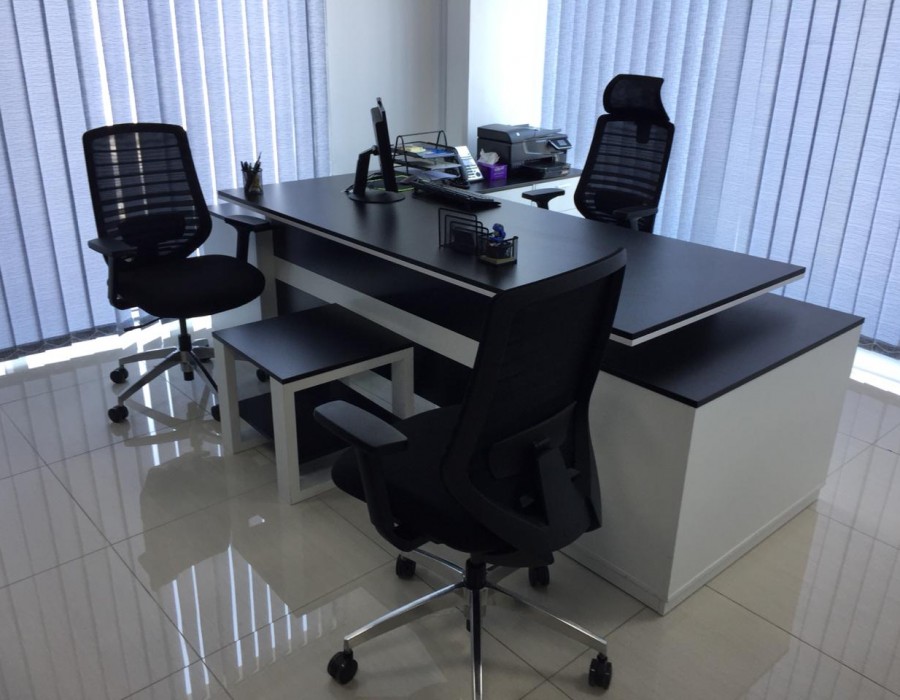The best ergonomic office chairs surpass the minimum criteria specified by the safety regulations to contribute to the health and efficiency of the labor force. Garry Sherwood of Posture and Office Seating offers his opinion and guidelines for making the most favorable choice in ergonomic office chairs.
· What are the main prerequisites for good ergonomic seating?
· How do I identify ergonomic chairs that exceed the bare minimum health and safety requirements?
The working population is spending ever more time sitting down both at home and in the workplace. A large amount of leisure time is spent on a soft chair watching television, reading or dining or lounging in the garden; travel means sitting in cars, buses, trains, or planes; and in the office, many workers sit for much of the time, and with the introduction of the all-electronic office, people perform more tasks in the same seat. Call centers and control rooms have employees sitting for extended hours sometimes working 12-hour shifts.
All of this means there is a requirement for the stringent design and selection of good ergonomic chairs.
Define good seating?
Ergonomically correct and comfortable office seating should provide even bodily support for an assortment of postures over a long period of time.
It should also be appropriate for the task at hand or activities to be performed by the person sitting on the chair. The main requirements for good seating are that:
· Blood circulation in the thighs is not constrained;
· The bodily posture requires very slight muscular effort to maintain;
· The pressure on the spinal column is minimized;
· Without discounting any of the above requirements, the design of the work environment, office furniture and task should promote a definite amount of movement and variation of posture.
The best ergonomic office chair design is one that offers the best support and comfort for you in particular. Whilst all ergonomic office chairs are made to offer better shoulder, back, and neck support, there are accessories you can add to your choice of ergonomic chair design to ensure that it is the best fitting and suitable purchase you can make.
Comfort
The majority of people will know as soon as they sit in it, whether or not it is a certain ergonomic chair design that is going to be suitable for them to work in for long hours. A suitably designed ergonomic chair will match the curve of your spine and allow you to move your legs effortlessly. It will also permit a minimum of three finger-widths of space between the back of the knees and the seat edge and should have a comfortable seat and backrest cushion. Perforations in the pillow will allow for correct air circulation.
Stability and Adjustability
Quality ergonomic chairs will incorporate a vertically adjustable - via a gas lift - seat that permits you to lean back comfortably. The adjustment controls should be easy to use as well. The ergonomic chair that you choose should also offer plenty of adjustable lumbar support for your lumbar region or lower back, with either a winding mechanism or an air hand pump. It will also offer stability when the chair is being used but move sideways and rotate with ease. The better quality ergonomic chair will have adjustable cushioned armrests, which are both vertically and sideways adjustable so that they can be stowed out of the way.
Back Rest and Seat
The most important component of a superior ergonomic chair design is the backrest. The backrest should offer enough support to your lower to middle back, shoulders and should be height adjustable. It ideally should also easily move forward and back and lock at the best angle to suit your body shape. A quality ergonomic chair will include an air pump to mold the seat to your bottom, evening out the pressure on the buttocks, reducing discomfort.
How does the task affect the choice of office chair?
In the work environment, chairs should not be considered independently but in conjunction with the desk surface, because the chair should go well with both the height of the workstation and the body size of the user.
The distance between the chair seat and work surface should be around 210-300mm, whilst maintaining a minimum170mm between the underside of the desk surface and the chair seat.
Ergonomic and comfortable office seating design relies mainly on what task the person sitting in the chair will be doing. Generally, the work done in offices falls into two distinct categories: dedicated tasks or multi-task work.
Multi-tasking work
As the term suggests, multi-task work involves performing out a number of different tasks, and sometimes simultaneously.
Multi-tasking employees generally move around a lot in their offices. They might be reading reference material, doing written work, using a computer, using a telephone, and accessing a number of devices on and around their workstation, and having meetings with colleagues.
Multi-task work is almost perfect in an office environment because in ergonomics terms constant varying of tasks makes the body adopt different postures.
Altering posture allows muscles to swap between tension and relaxation, and also allows the spinal discs to move on a regular basis, reducing the chances of stiffness or repetitive strain injuries.
This also encourages increased blood flow and hence prevents any build-up of pressure on the buttocks, in the legs and backs.
Consequently a multi-task office the chair should allow your body to move whilst maintaining good postural support, particularly for the lower back.
Dedicated task type work
Dedicated task work is normally extremely repetitive and requires the employee to sit in a somewhat fixed posture for extended periods of time. Such workers are basically desk-bound and normally carry out one type of task.
An excellent example of this would be call center employees. As a task becomes more dedicated, the employee becomes more trapped at his desk.
Dedicated task types of work invariably work certain muscles continuously (in order to keep the body in a certain posture).
Sat in the same position for extended periods also reduces blood circulation to inadequate levels at which it becomes hard to eliminate the accumulated lactic acid during continuous working of the muscle.
There is some documented clinical evidence that such physiological effects of dedicated task type work add to back problems among office employees.
There is nothing worse than having an ergonomic office chair with multiple intricate controls that either user do not understand, do not use at all or adjust incorrectly.
A complete user manual for the chair is required and should explain the various uses of the controls and illustrate how to achieve the best, appropriate and comfortable posture.
When your ergonomic chair is delivered the user should be given in-house training to make sure they are familiar with the extended controls for each posture seat adjustment appropriate to their tasks.
Office Chair Regulations - Everything you should know
The Display Screen Equipment (DSE) regulations affect all of today's office employees. The Health and Safety Executive (HSE) introduced them in 1992 to put into operation the European VDU the directive, and were revised in 2003 to include laptop computers, but includes no amendments regarding office chairs or desks.
DSE regulations have numerous minimum requirements that all equipment, including office chairs and office desks must comply with.
The schedule in the DSE regulations declare the following requirements for an office type chair in use at a DSE workstation:
· The office chair shall be stable and permit the user freedom of movement and a comfortable posture.
· The chair seat shall be adjustable in height.
· The seat backrest shall be adjustable in both tilt and height.
· A footrest shall be made available to any user that requires one.
These are very broad-spectrum, but HSE's supplementary guidance document says:
"The primary requirement here is that the work chair should allow users to achieve a comfortable position. The schedule requires the seat to be adjustable in height (i.e. relative to the ground) and the seatback to be adjustable in height (also relative to the ground) and tilt."
The document goes on to say..."Provided the chair design meets these requirements and allows the user to achieve a comfortable posture, it is not necessary for the height or a tilt of the seatback to be adjustable independently of the seat. Automatic backrest adjustments are acceptable if they provide adequate back support."
HSE guidance also states that the equipment (including chair and desk) that complies with the requirements of BS EN ISO 9241 will meet the requirements of the regulations. It also refers to dimensional and safety standards, which are listed below.
Standards checklist
· Ergonomic requirements as in BS EN ISO 9241 Part 5.
· Safety requirements as in BS 5459 Part 2 (for people weighing up to 150kg and for up to 24 hours use) or BS EN 1335 Part 2 (for users weighing up to 110kg and only up to 8 hours use).
· Dimensional requirements as in BS EN 1335 Part 1.
· Flammability standard BS EN 1021-1 1994.
Chairs meeting these standards will merely fulfill the minimum requirements of the regulations. Compliance with the above standards is only the starting point in the selection of a quality ergonomic office chair.
So your journey to select an ergonomic office chair begins, search the online office furniture websites and sort out the wheat from the chaff. Do not be afraid to query the office chair standards or quote them to prospective suppliers. The majority of office chair suppliers will be only too glad to receive your query and will be more than happy to explain their wares when there is a chance of a sale.
Get the latest updates on modern office furniture in Dubai, for detailed office furniture, please visit our website officemaster.ae
OfficeMaster Al Quoz Branch – Office Furniture Dubai






Comments